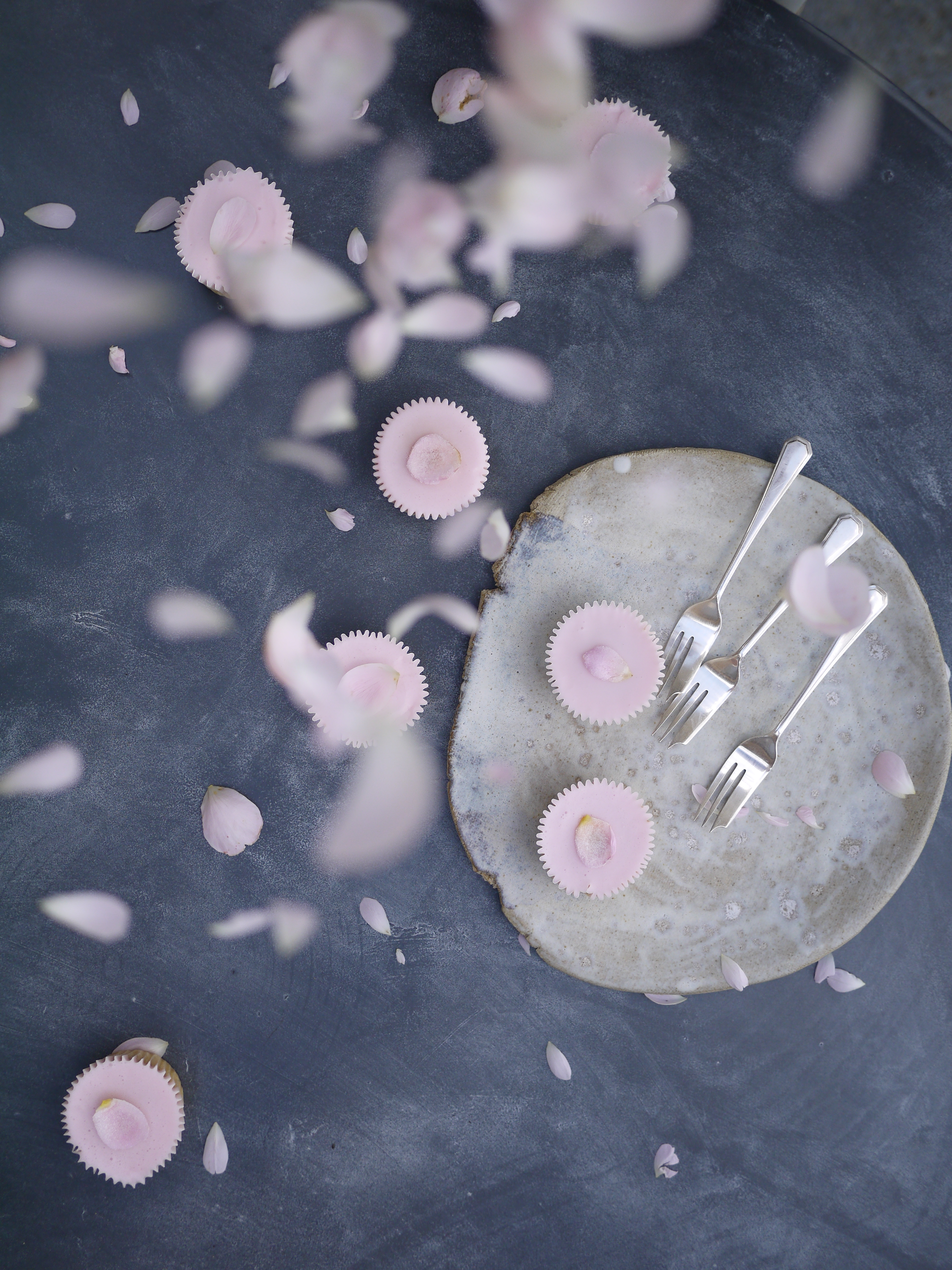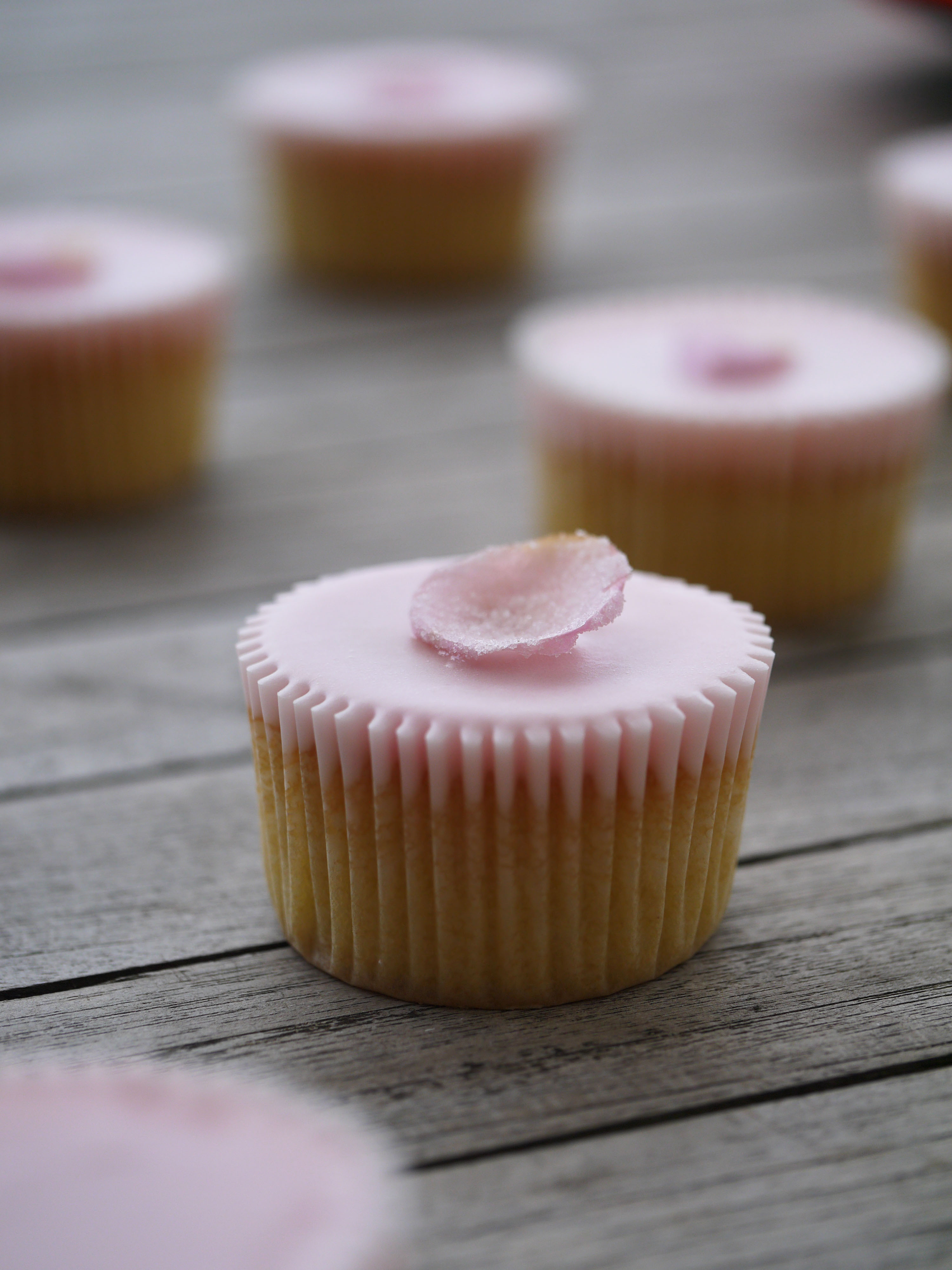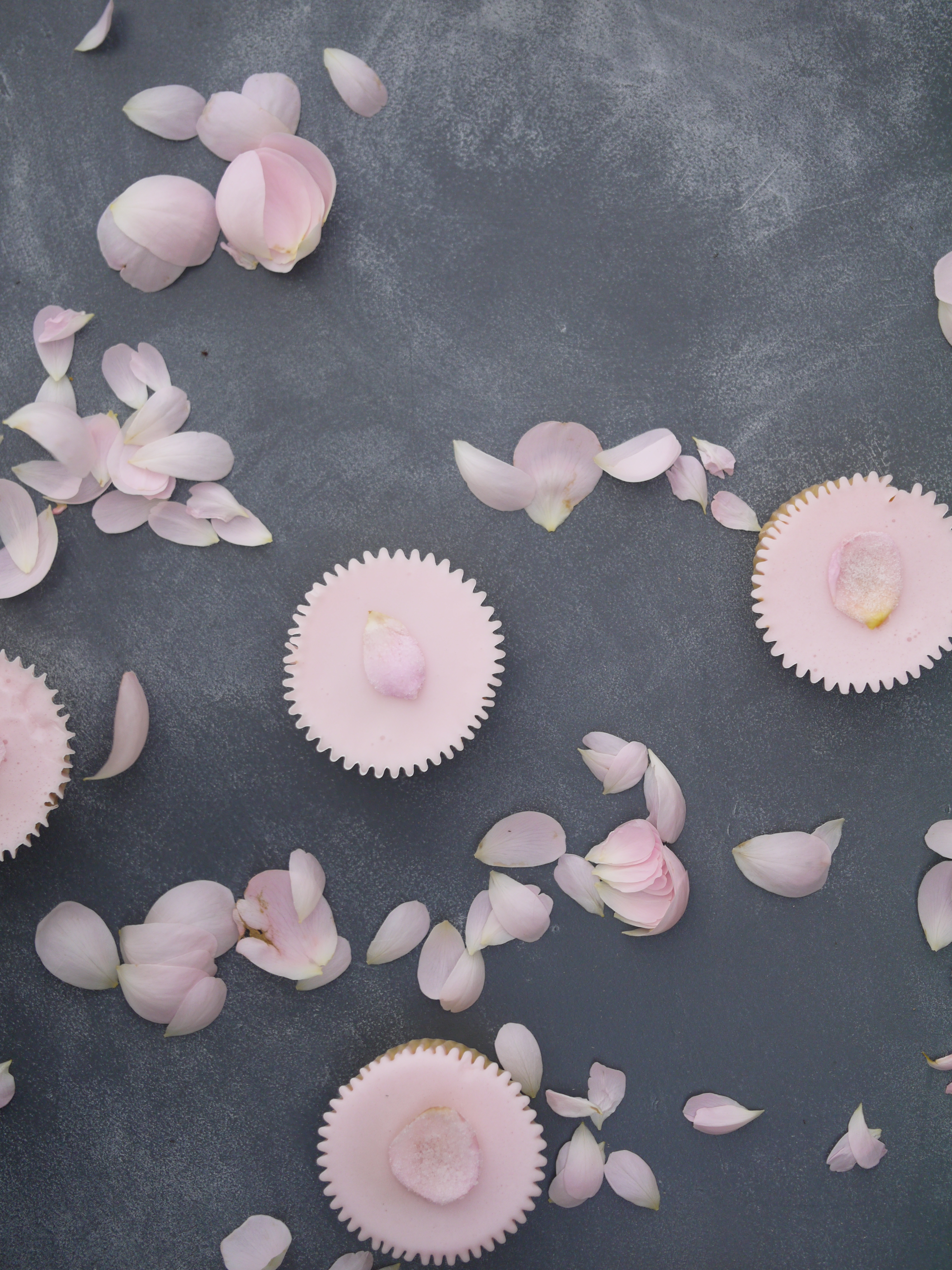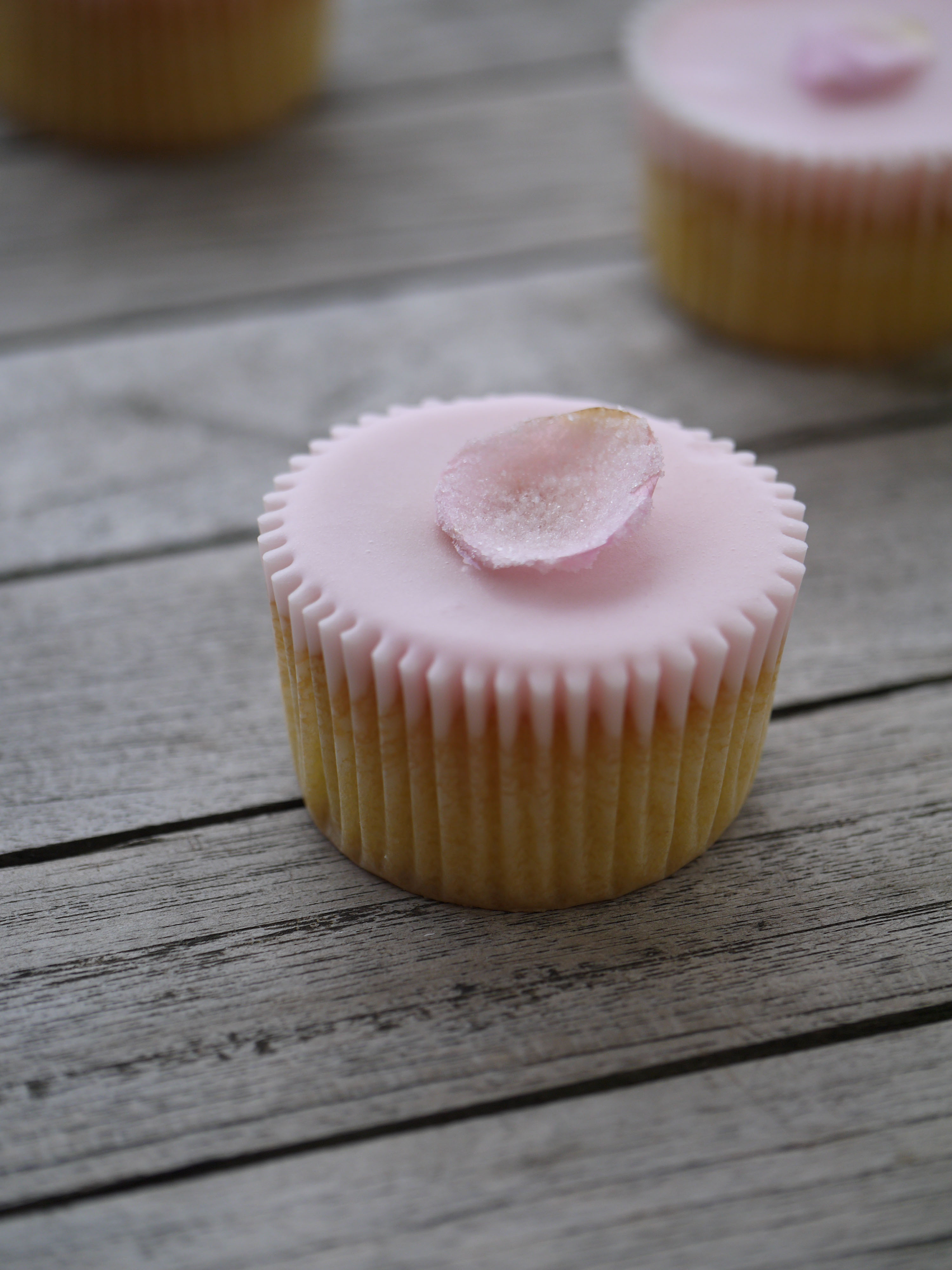“- a rose. By any other name would smell as sweet” Romeo & Juliet, Shakespeare.



These cupcakes were created as a trial run during concept phase for a special bride-to-be. I rarely use any other recipe for cupcakes than the one given below with small flavour variations so it’s nothing adventurous. It’s also frequently the same recipe I use in tall large layer cakes unless I require something a bit denser and firmer for strength.
Notes
Getting flat tops on your cupcakes: the domes or peaks on cupcakes often happen due to over filling with mix. For this recipe, a smaller amount of batter is even more important, as we’re not only looking for flat tops, but also a decent space between the top of the sponge and the top of the cupcake case for our icing. Doming is also exacerbated by an oven that’s too hot, or failing to bake in the middle, so adjust to your own oven accordingly.
WHAT YOU’LL NEED
Equipment:
- electric stand mixer (hand mixer will do)
- sieve
- measuring spoons
- spatula
- 12 hole cupcake tin
- cupcake cases (ideally foil cases as they are stronger)
Makes: 8-10 cupcakes
INGREDIENTS
The cake batter:
- 4oz / 115 grams butter
- 4oz / 115 grams caster sugar
- 2 large eggs (pre-whisked)
- 1½ teaspoons vanilla extract
- 4oz / 115 grams plain flour
- 1½ teaspoons baking powder
- 1-2 tbs milk
The icing:
- 225 grams powdered fondant icing (we used Tate & Lyle)
- 2 tbs water
- 1/2 tsp rosewater
- Food colouring (would recommend Wiltons gel colours)
The petals:
- 8-10 rose petals
- 1 egg white
- caster sugar
- paint brush
- teaspoon
METHOD
- Preheat the oven to 165C/330F/Gas 3 and line your cupcake tin with paper cases.
- Cream the butter and sugar together in a bowl until pale and fluffy, using an electric mixer if you have one. Beat in your whisked eggs a little at a time and add the vanilla extract. You can alternatively chose to separate your eggs for this stage for en extra tender cake – if separating your eggs, add the egg yolks now and continue on with the steps below, remembering at the end to whip your eggs separately in a squeaky clean bowl before adding them in very gently to the final mix.
- Fold in the flour with a metal spoon or spatula being careful not to beat out the air. You should have a smooth batter. Add the milk until the mixture is of a dropping consistency.
- Spoon the mixture into the paper cases until they are just under half full – they’ll look too empty to be be oven-ready, but unlike with standard cupcakes, you’ll need to leave plenty of room at the top to flood ice these once risen. This might take a bit of experimentation to feel comfortable with quantity so it’s a good idea to bake a few and save some batter to see how the first lot turn out so you can adjust.
- Bake in the oven for 15 minutes, or until golden-brown on top and a skewer inserted into one of the cakes comes out clean. They may require as much as 18 minutes, so keep checking.
- Set aside to cool for 10 minutes, then remove from the tin and cool on a wire rack
The icing:
We use poured fondant icing to achieve this pretty look. We often make our own, but store-bought is a little less time consuming and what we used for this bake. I recommend buying Tate & Lyle Fondant Icing sugar in the form of a powder for this version.
- Mix the powdered fondant icing in a bowl with the water and rosewater. Although you could now colour it and use this straight away to pour on the cupcakes, I would advise warming the mix gently on the hob or in a microwave to remove the hard crystallised bits in it and achieve a perfectly smooth consistency.
- Add a tiny amount of your chosen gel food colouring until you get your required soft rose colour. N.B. A note on colour theory in case you’re not familiar: using red food colouring will give a lovely rose colour to white icing, but if all you have is a dedicated pink colouring, I’d recommend also adding the tiniest hint of yellow to the mix to achieve that slightly less baby pink, and a more chic rose pink colouring. Go easy though – too much yellow and your pretty pink will turn orange!
- Pour a thick layer over your cupcake allowing it to fill the fluted edges of the cake case. Place to one side and allow the icing to fully set. It sets to a soft icing with a firm surface on top, so be gentle if picking them up – the perfectly smooth set tops will crack easily if not handled with care.
The crystallised petal:
- Take a fresh rose and remove 8-10 of it’s most beautiful and well preserved petals.
- Lightly whisk your egg white and place your sugar in a shallow bowl.
- Hold the base of a petal using the tip of your thumb and fore finger and paint both sides with the egg white, ensuring you cover the whole petal.
- Spoon the sugar all over the petal, shaking off any excess
- Place the petals on baking parchment and leave to dry for at least 2 hours or overnight if possible. The crystallised rose petals can be stored in an airtight container for up to 2 weeks and so could be made ahead.
- Place one rose petal on each cake to finish. It’s all the decoration you need for beautiful romantic minimalism. Cut into one with a fork and as you take a bite, enjoy all the reminders it creates of stepping into a rose garden in summer.


